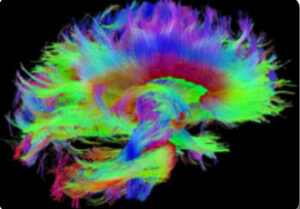Theis Hyperpolarization Lab receives exploratory R01 from the National Institutes of Health


The Theis Hyperpolarization Lab receives an exploratory R01 grant from the National Institutes of Health (NIH) to develop “Molecular MRI of Brain Metabolism Enabled by Long-Lived Spin States”, funded by the BRAIN Initiative dedicated to the Proof of Concept Development of Early Stage Next Generation Human Brain Imaging research project.
The Research Project Grant (R01) is the original and historically oldest grant mechanism used by NIH. The R01 provides support for health-related research and development based on the mission of the NIH. The Brain Research through Advancing Innovative Neurotechnologies® (BRAIN) Initiative is aimed at revolutionizing our understanding of the human brain.
The goal of Theis Hyperpolarization Lab would be “to establish technology for tomographic mapping of metabolites and their metabolic pathways directly in the brain.” The following proposal abstract sheds light on the purpose of their research:
Brain function is regulated by molecular signaling and metabolism, however our ability to track metabolic transformations of individual metabolites deep in the brain pales compared to their central relevance to life. It is our goal to establish technology for tomographic mapping of metabolites and their metabolic pathways directly in the brain. Specifically, we aim to map metabolic turnover of13C2-pyruvate, ethyl-13C2-pyruvate, 13C2-Vitamin C, 15N-Vitamin B3, 15N3-Metronidazole (a well-tolerated antibiotic and potential hypoxia probe), and 13C2-Acetate. All of these markers play critical roles in brain metabolism: pyruvate is a key entry point to energy metabolism and the tricarboxylic acid (TCA) cycle; Vitamin C (ascorbate) is a vital antioxidant molecule in the brain; Vitamin B3 (Nicotinamide) is a precursor to NAD (nicotinamide adenine dinucleotide), a key regulator of cellular and organismal homeostasis and redox-status; metronidazole is an antibiotic that undergoes quick turnover in hypoxic tissue and promises to be a very sensitive hypoxia sensor; Finally, acetate acts as an alternative energy source for the brain and exhibits rapid and differential uptake and metabolism in, for example, glioblastoma multiform, a deadly brain cancer.
From a technological perspective, each of the proposed molecules can carry long-lived hyperpolarization in NMR-silent, yet RF-accessible quantum states. This property is important because it allows for very long-lived MRI signals from these molecules that can directly report on chemical transformations via changes in chemical shift and the scalar coupling network. This ability will allow us to assess kinetics and spatial distribution of reaction pathways of metabolites at low concentration with sub-second resolution. We have already demonstrated the fundamental physical principles: i.e. lifetime extension of NMR signals by long-lived spin states. This proposal transforms our advances into practical, general, and affordable technology which will give us unprecedented insights into the metabolic basis of brain function with clear potential for scanning broad patient populations.
Join us in extending our sincere congratulations to Dr. Thomas Theis and all the members of his lab!
- Categories:


